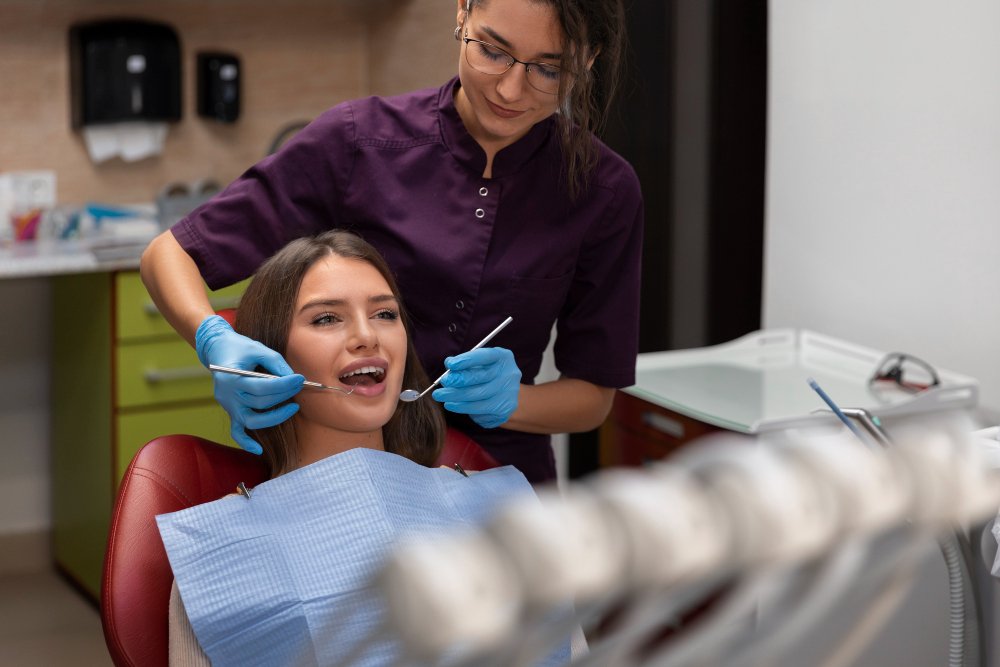Peri implant disease treatment have revolutionized modern dentistry. With over 3 million Americans already having implants and an additional 500,000 receiving them annually, these titanium wonders have become the gold standard for tooth replacement.
However, as implant popularity grows, so does the incidence of complications—particularly peri-implant disease. This condition affects the soft and hard tissues around dental implants and, if left untreated, can lead to implant failure and significant oral health problems.
Early diagnosis and prompt peri implant disease treatment are crucial for preserving both the implant and your overall oral health. This guide will walk you through everything you need to know about the treatment of this condition.
What is Peri Implant Disease?
Peri-implant disease refers to inflammatory conditions affecting the tissues around dental implants. Unlike natural teeth connected to the jaw by periodontal ligaments, implants are directly integrated with bone through a process called osseointegration. This structural difference influences how infections develop and progress around implants.
Symptoms to Watch Out For
Be alert for:
- Redness around the implant
- Swelling or puffiness
- Gum recession
- Bleeding when brushing or flossing
- Pus discharge
- Implant mobility
- Discomfort or pain
- Persistent bad breath
- Metallic taste
Many patients mistakenly believe that implants do not require the same extent of care as natural teeth. This misconception can lead to delayed reporting of symptoms, complicating treatment.
If you’re experiencing any symptoms mentioned above or it’s been more than six months since your last implant check-up, schedule an appointment with a qualified dental professional. For those in southern Minnesota, consulting with a periodontist in owatonna, mn who specializes in implant health can provide you with expert care tailored to your specific needs.
Peri Implant Disease Treatment
Treatment approaches vary, relying on the severity of the condition, with the primary goals being elimination of infection, resolution of inflammation, and regeneration of lost tissues. Here’s a breakdown of current options:
1. Non-Surgical Treatments
For milder cases, non-surgical approaches are often the first line of treatment:
Professional Mechanical Debridement
- Specialized instruments: Titanium, plastic, or carbon fiber instruments that effectively remove biofilm without scratching the implant surface
- Air-powder abrasion: Using specially formulated powders to gently but thoroughly clean implant surfaces
- Ultrasonic devices with special tips: Designed specifically for implant maintenance
Antimicrobial Therapy
- Chlorhexidine irrigation: Flushing affected areas with this powerful antimicrobial agent
- Local delivery antibiotics: Placed directly in the pockets around implants for sustained release
- Antimicrobial photodynamic therapy: Using light-activated agents to target bacteria
Laser Therapy
Multiple laser types have shown promise in peri-implant disease treatment:
- Er: YAG lasers: Effectively remove granulation tissue and biofilm with minimal heat generation
- Diode lasers: Primarily used for their bactericidal effects
- CO2 lasers: Can help decontaminate implant surfaces
Systemic Antibiotics
In more advanced cases or when there are signs of active infection, systemic antibiotics may be prescribed as an adjunct to local therapy, typically including:
- Amoxicillin
- Metronidazole
- Combinations tailored to the specific bacterial profile
2. Surgical Treatments
When non-surgical approaches prove insufficient or when dealing with moderate to advanced peri-implantitis, surgical intervention becomes necessary:
Access Flap Surgery
- Tissue reflection: Creating flaps to gain direct visual access to the implant surface
- Granulation tissue removal: Eliminating the inflamed tissue surrounding the implant
- Comprehensive decontamination: Using mechanical, chemical, and sometimes laser methods to clean the exposed implant surface
Implant Surface Decontamination Methods
- Chemical agents: Including citric acid, hydrogen peroxide, or chlorhexidine
- Mechanical methods: Such as titanium brushes or air-powder abrasion
- Laser decontamination: Using various laser types to sterilize the surface
Regenerative Procedures
For cases with significant bone loss, regenerative approaches aim to restore lost support:
- Bone grafting: Using autogenous bone, allografts, xenografts, or synthetic materials
- Guided tissue/bone regeneration: Placement of membranes to prevent soft tissue ingrowth while bone regenerates
- Growth factors: Including platelet-rich fibrin (PRF) or enamel matrix derivatives to enhance healing
Conclusion
Dental implants continue to offer revolutionary benefits for patients with missing teeth, providing function and aesthetics that closely mimic natural dentition. However, their long-term success depends on vigilance, proper maintenance, and prompt attention to any signs of peri-implant disease. With early detection and appropriate peri-implant disease treatment, the vast majority of affected implants can be successfully maintained.



